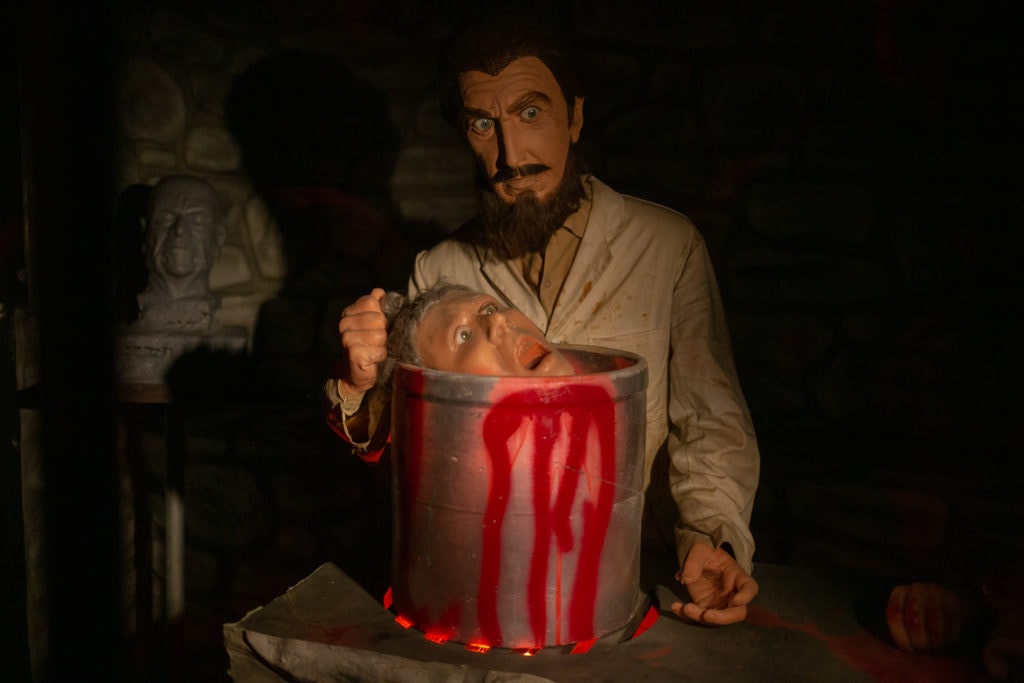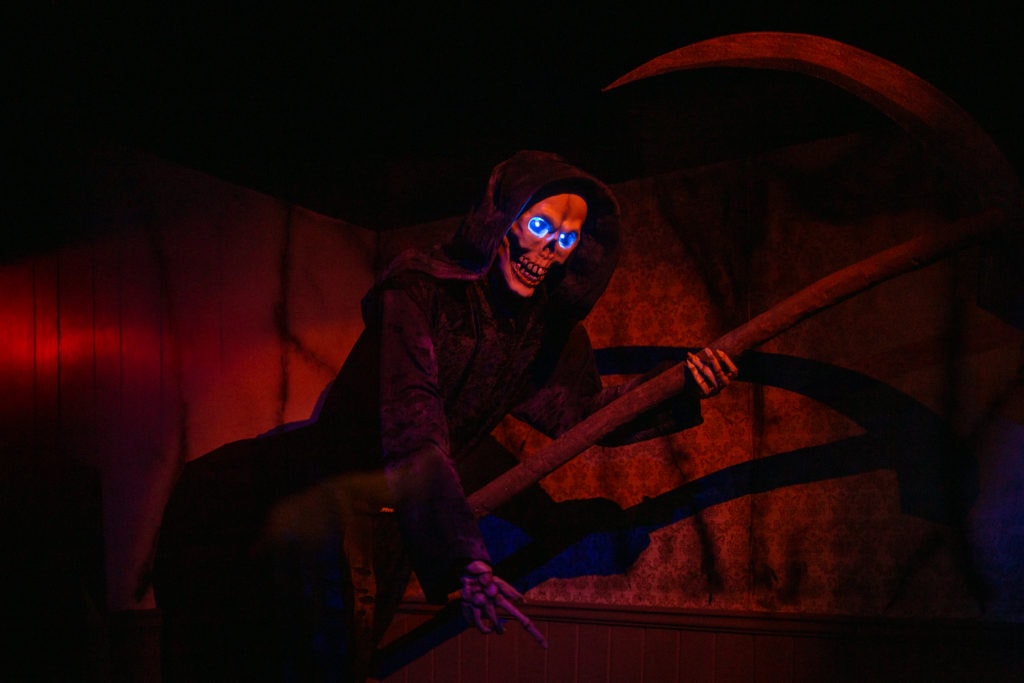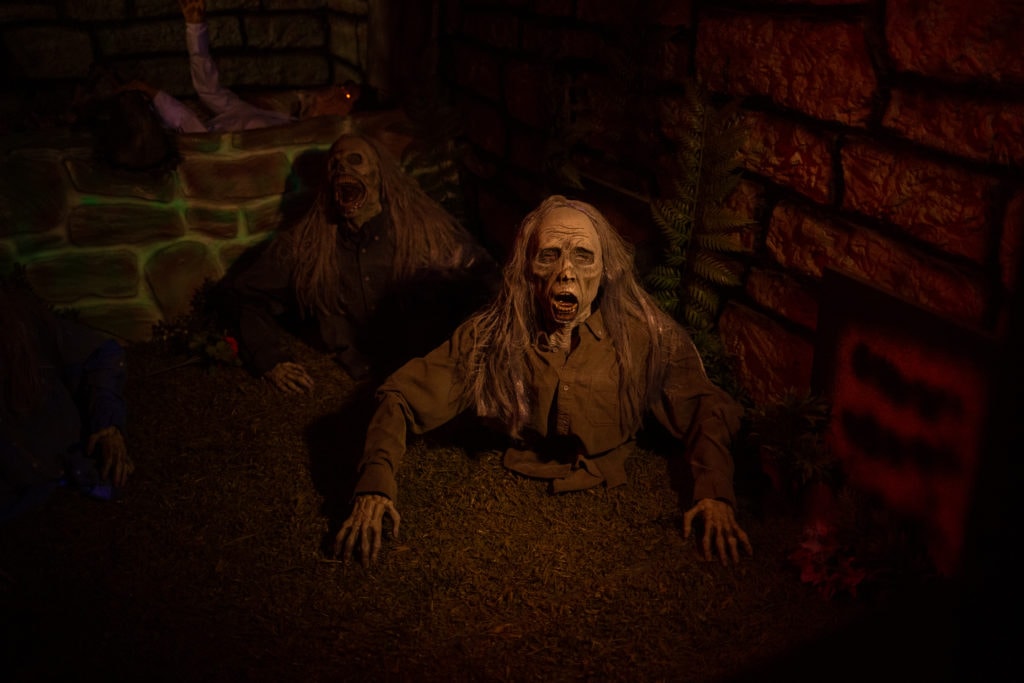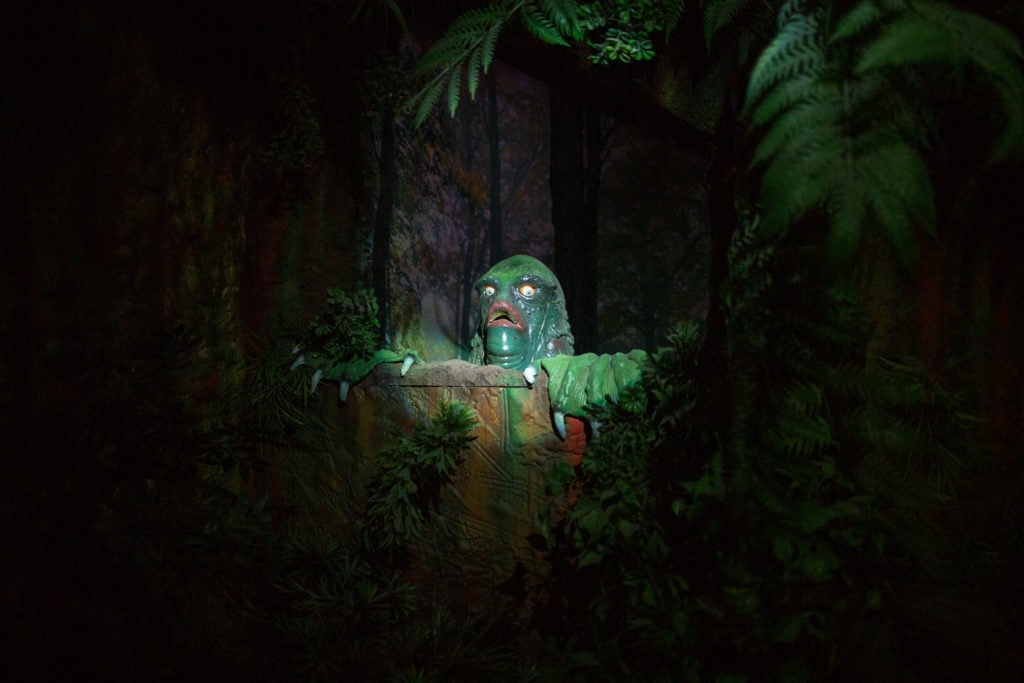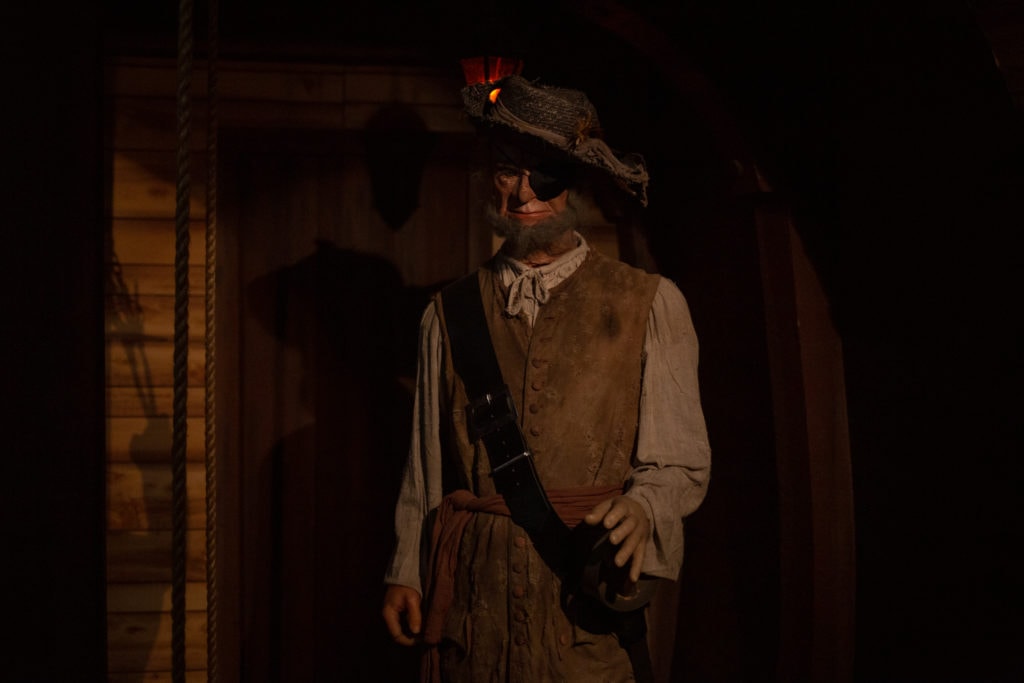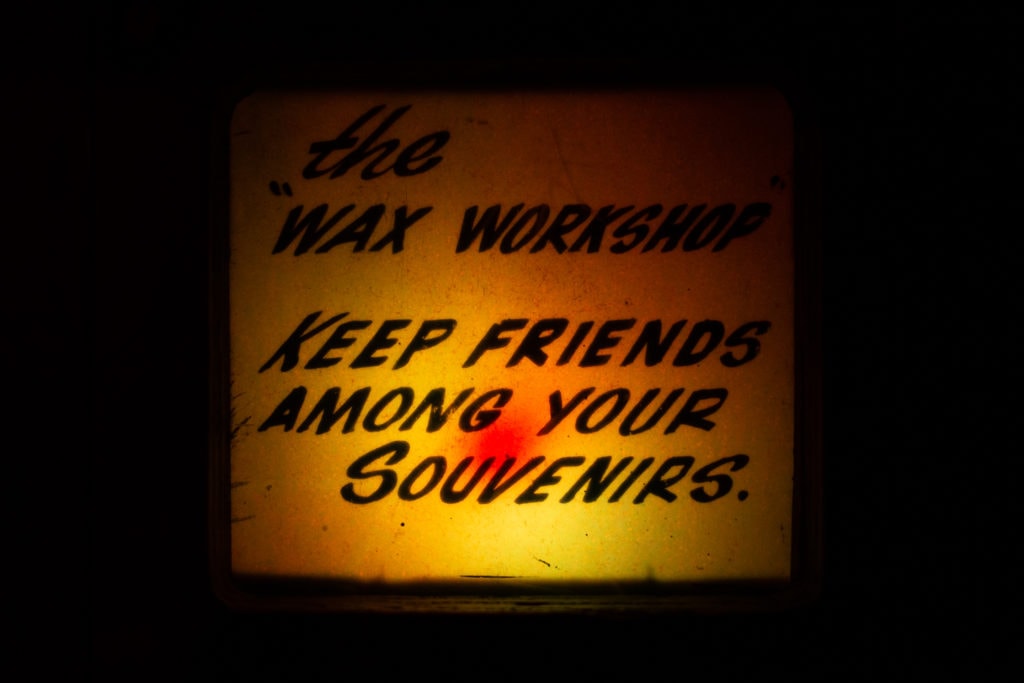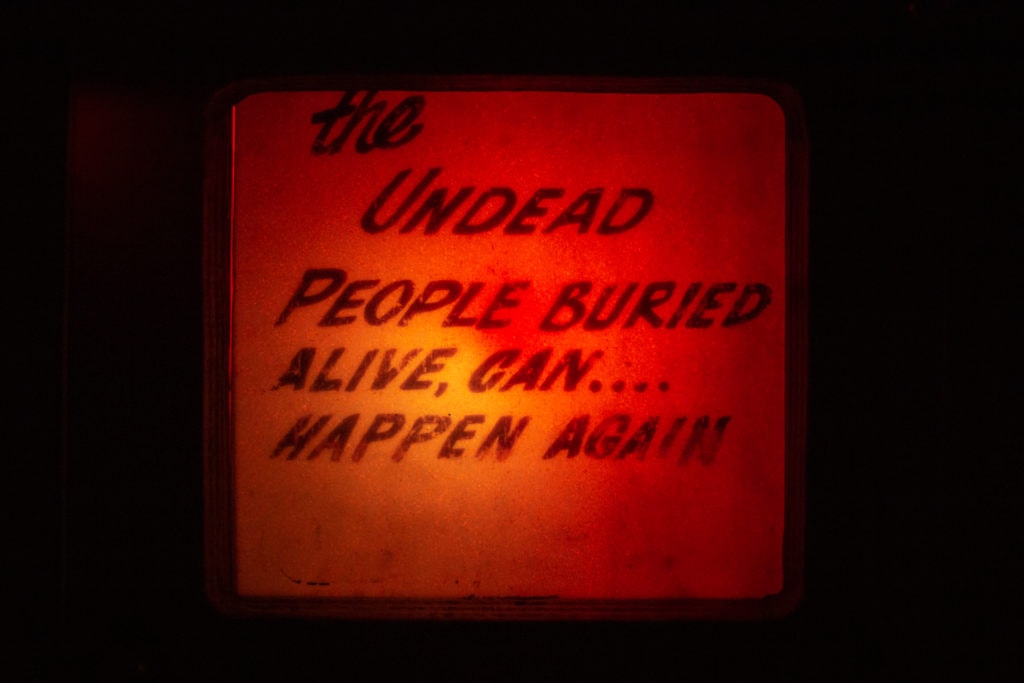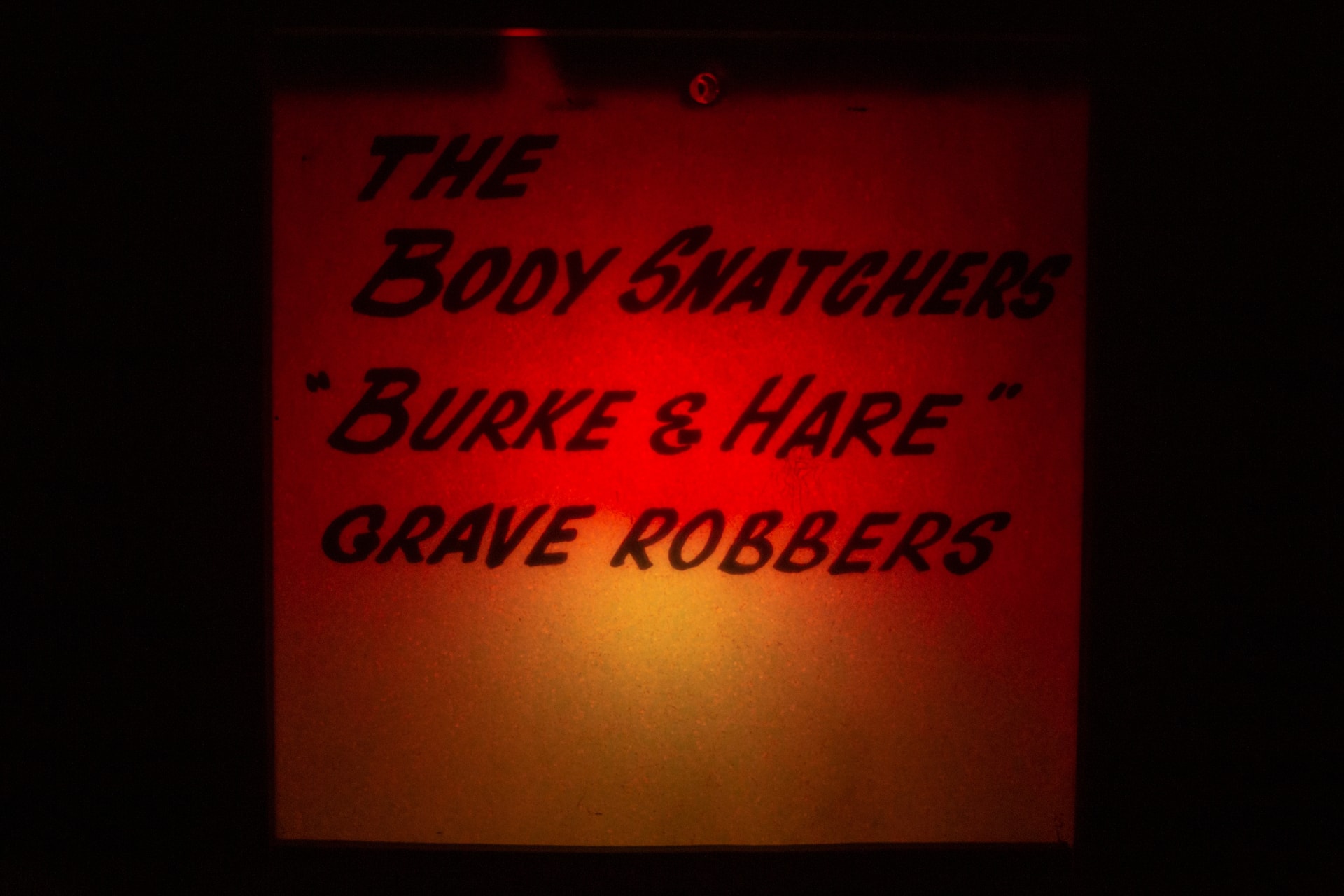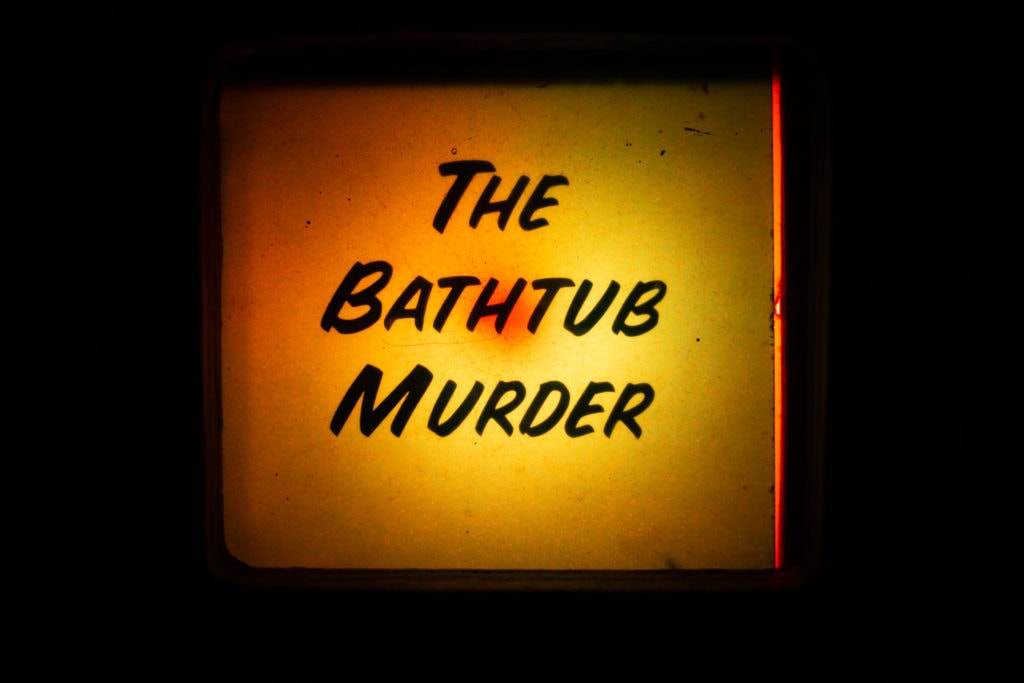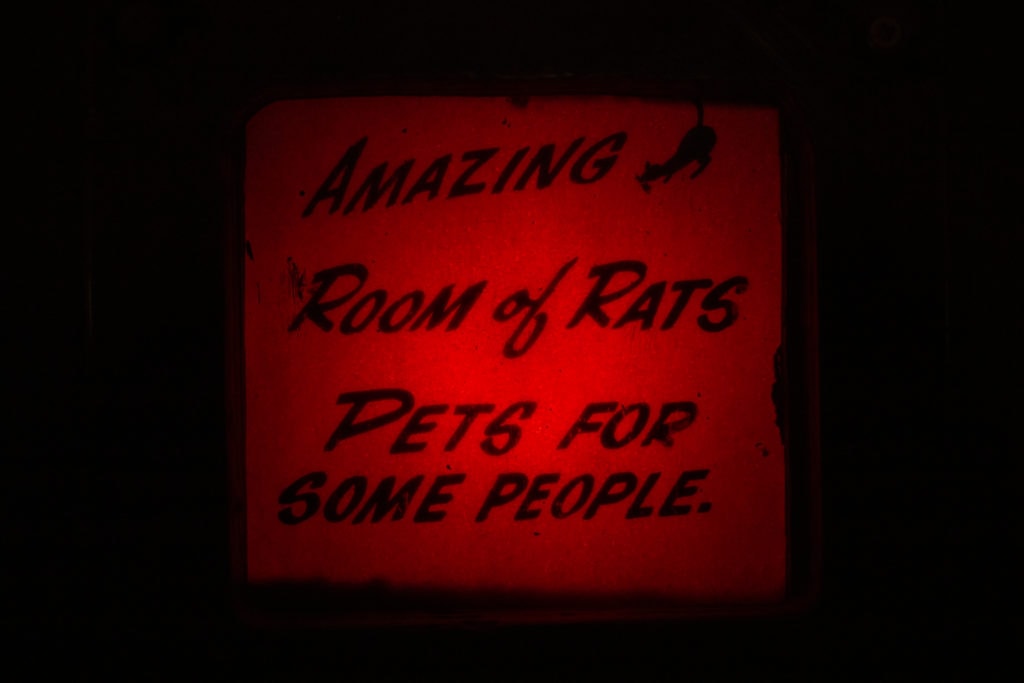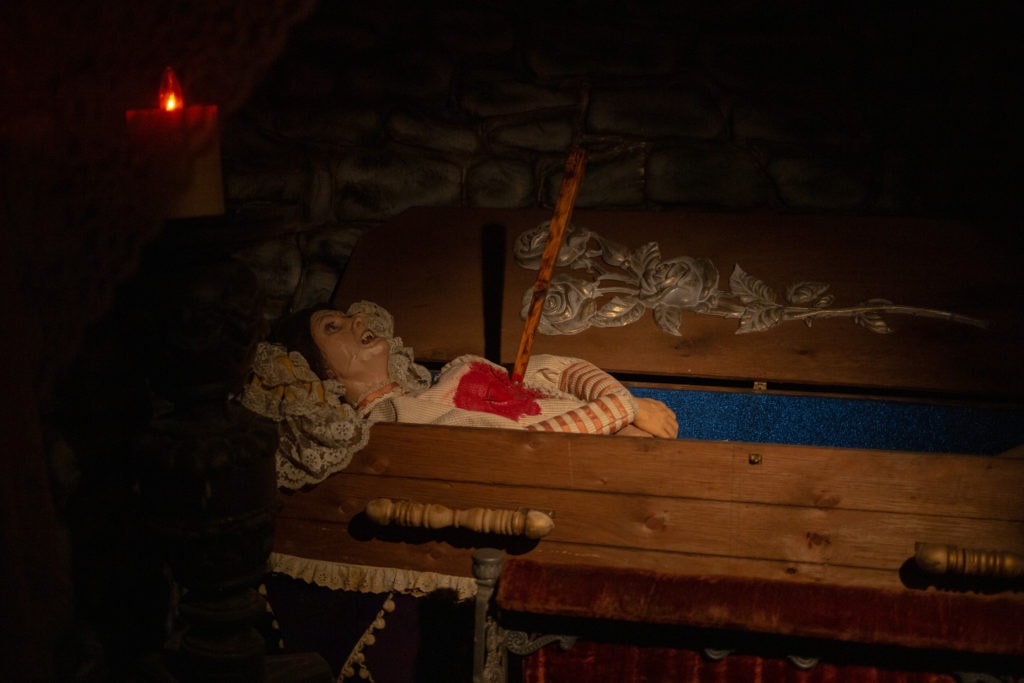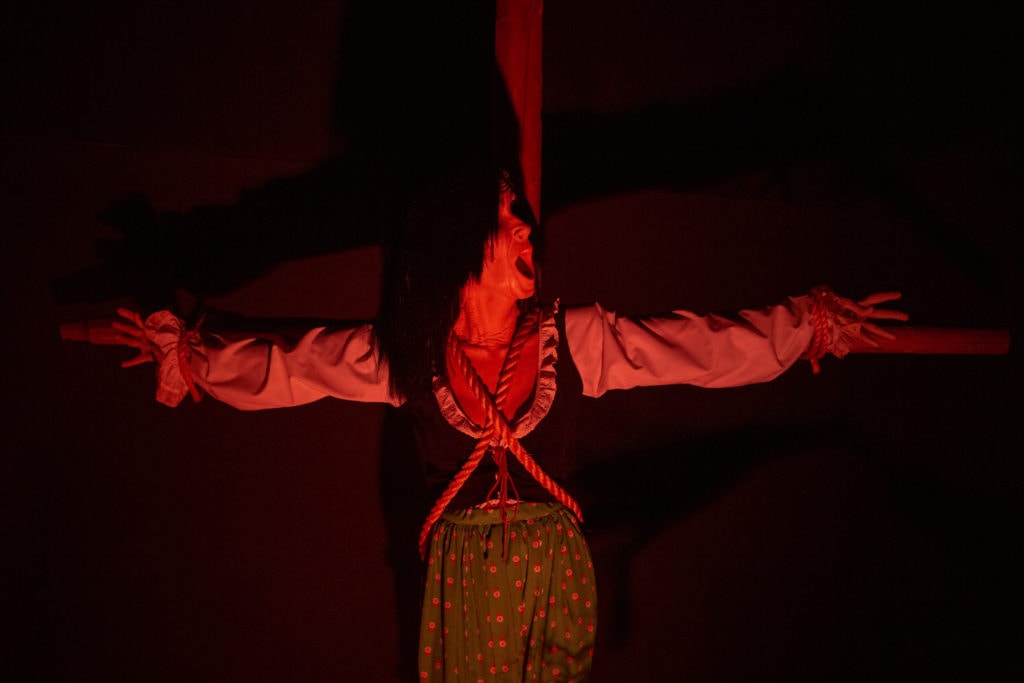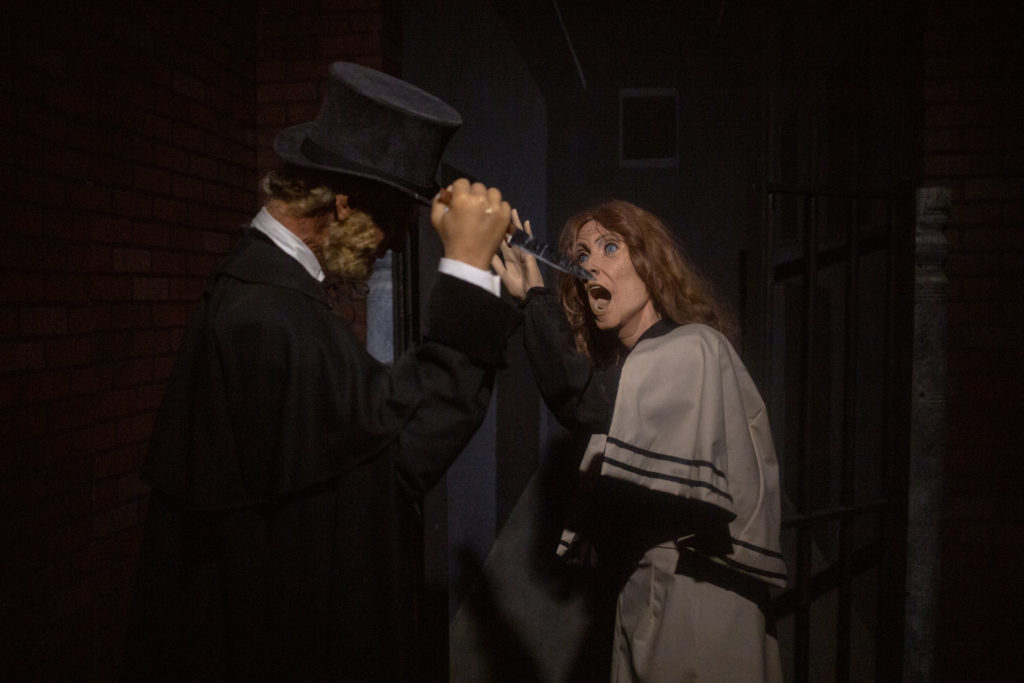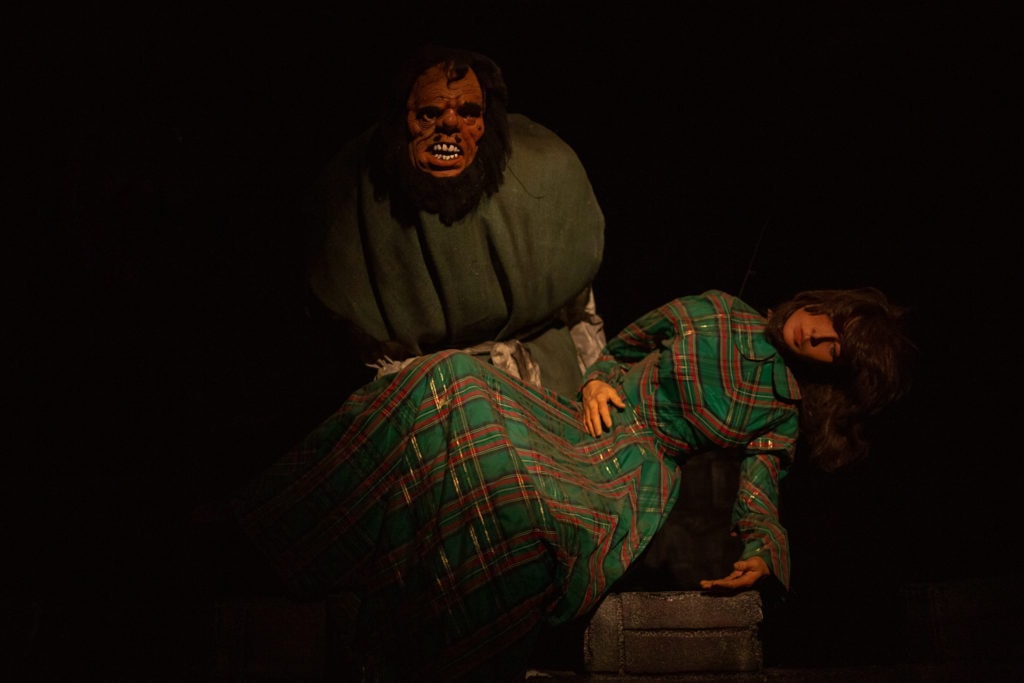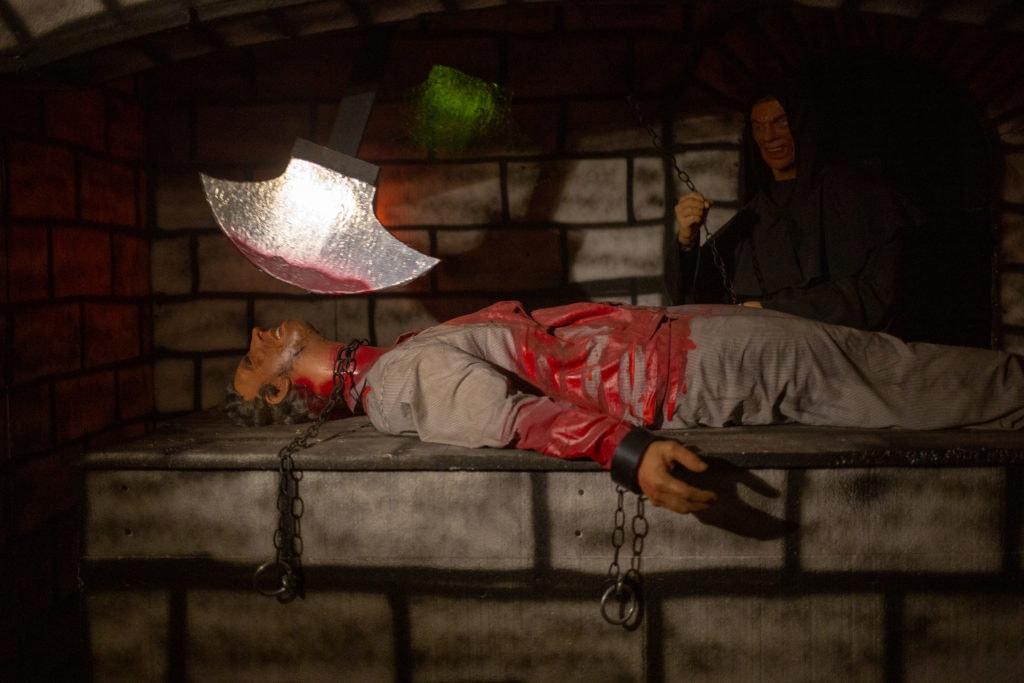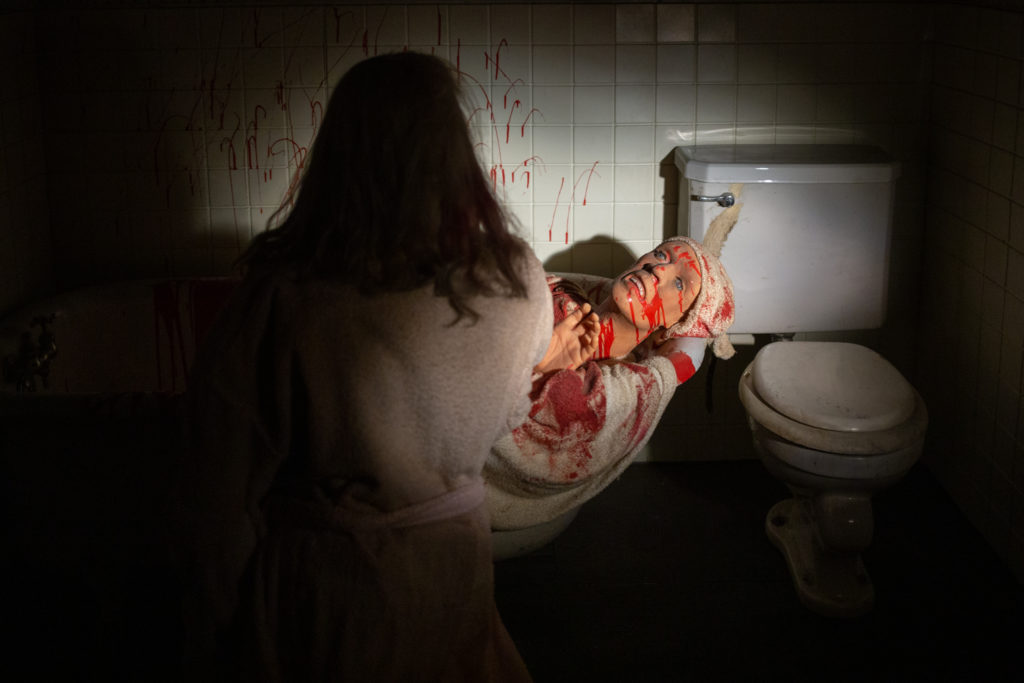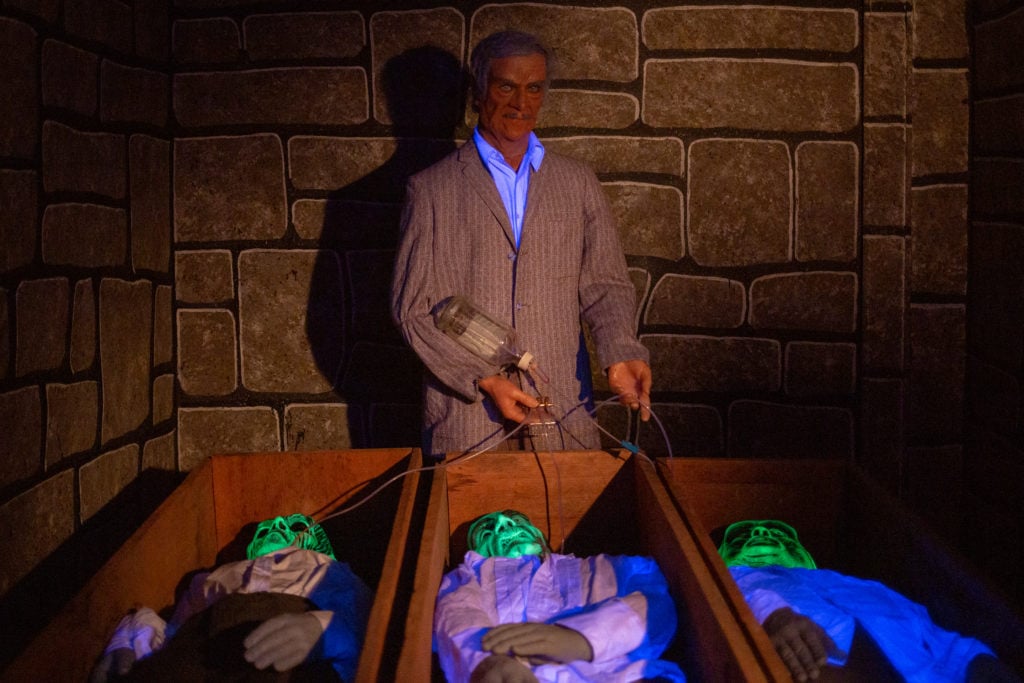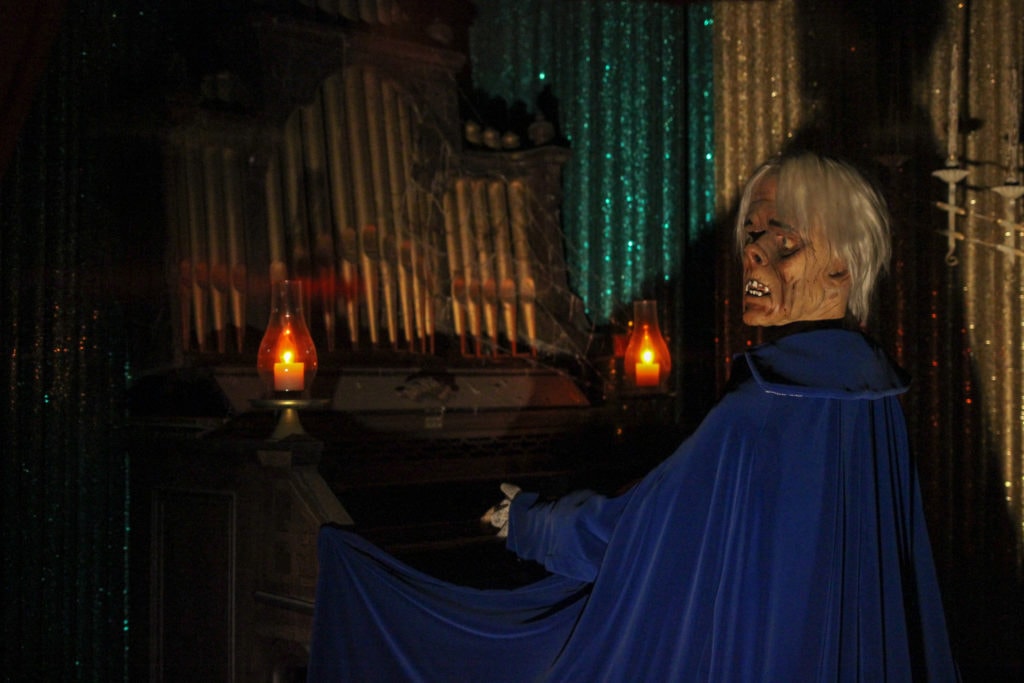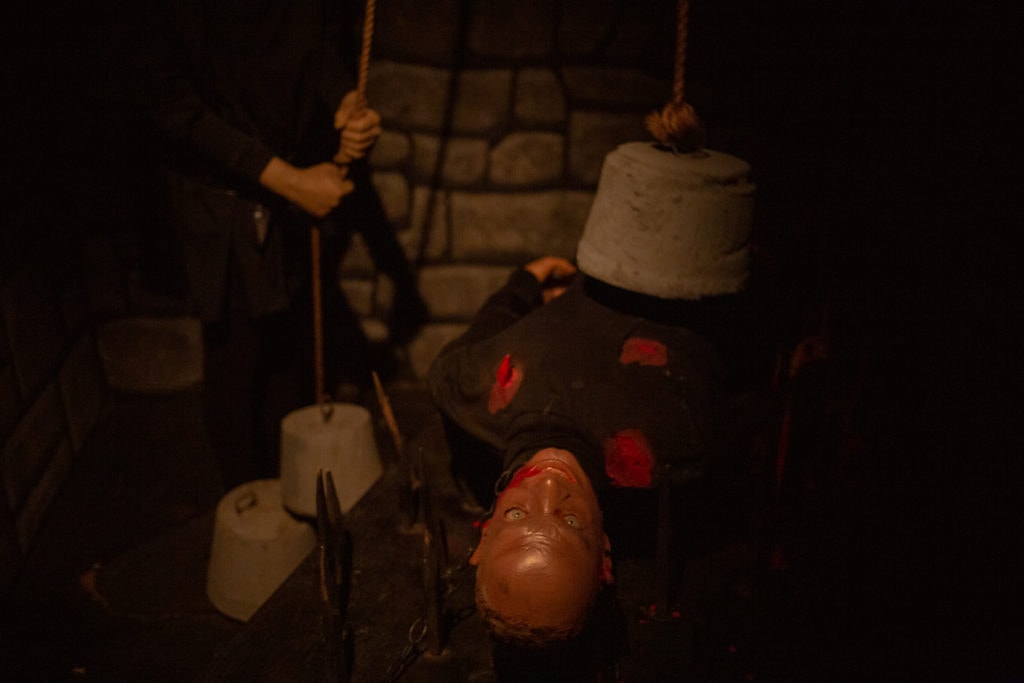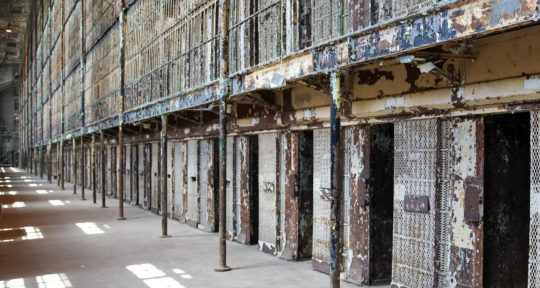I first visited House of Frankenstein Wax Museum somewhat by accident. I had driven several hours out of my way only to discover that the Magic Forest storybook theme park was closed for the season (it has since closed for good). Luckily, Lake George, a resort town located in the Adirondacks and solidly stuck somewhere in the late 1960s, has no shortage of attractions.
Frankenstein’s monster greets us at the door with a slow, silent wave—it is his house, after all. On the second-story, visible through a large window, a figure in a high-collared, satin cape plays a pipe organ flanked by gargoyles. Even the sign’s typeface—best described as “dripping blood”—more than hints at the creepy kitsch contained within the otherwise unassuming storefront.
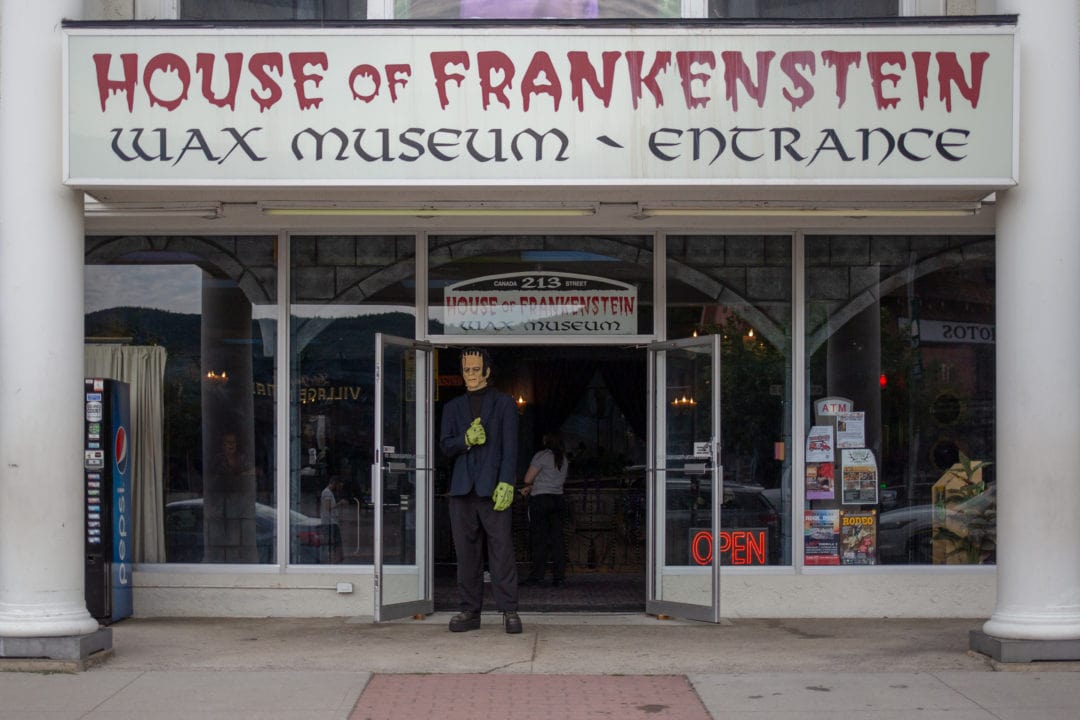
It gets significantly spookier inside the lobby, where a coffin—watched over by a faithful raven—slowly opens and closes, revealing its ghoulish contents on an endless loop. Skeleton sconces and chandeliers comprising skulls and rusty chains provide extra light for a mad wax scientist, who has been toiling away at the same nefarious experiment for the last 45 years.
I scare easily, but I was not deterred by signs warning that House of Frankenstein is not suitable for children. I brushed off the “Foolish Mortals Beware” and “No Refunds” signs as hyperbolic marketing ploys, paid my admission, and entered the first darkened hallway with smug confidence. This wasn’t my first visit to a wax museum, so I knew what to expect—or so I thought.
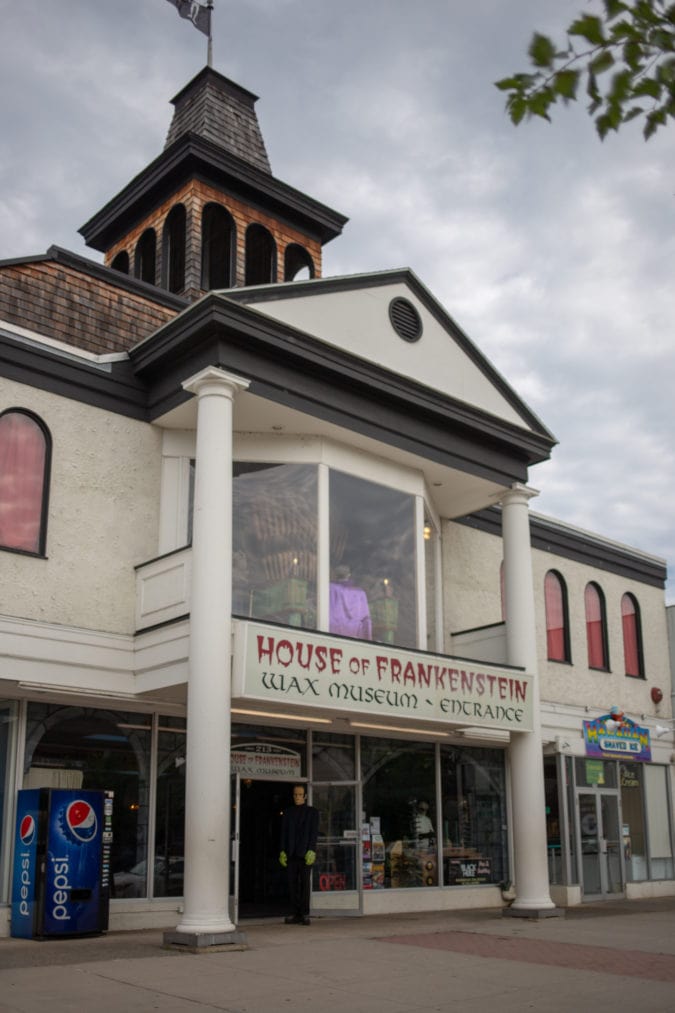
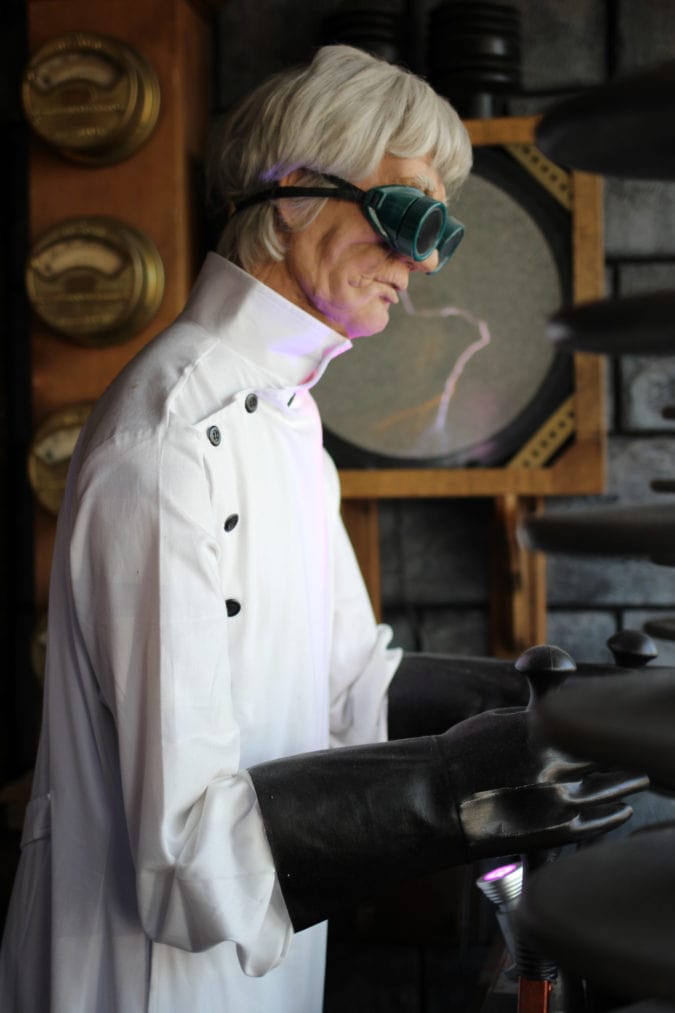
House of Frankenstein brings to life some of the most famous stories in the history of horror through dioramas and interactive displays. It features everything from classic literary tales and figures to modern-day pop culture icons like Freddy Krueger and Jason Voorhees. As long as the scene has the power to elicit a scream—or at the very least, a shiver—House of Frankenstein doesn’t discriminate.
No turning back
House of Frankenstein, which opened on the main tourist drag in 1974, was Lake George’s first wax museum and haunted attraction. Their website offers this warning to potential visitors (in all caps, no less): “Be warned. This is not just another wax museum. No indeed. When you ascend the haunted stairs you are on your own. Don’t turn back, there is no turning back. You must finish your journey of terror.”
The Wax Workshop. | Photo: Alexandra Charitan The Grim Reaper. | Photo: Alexandra Charitan The Undead. | Photo: Alexandra Charitan The Creature from the Black Lagoon. | Photo: Alexandra Charitan Photo: Alexandra Charitan
House of Frankenstein may be called a “wax museum,” but it’s much more than that. It’s more interactive and thrilling than a wax museum filled with lifelike—but ultimately lifeless—figures. There are jump scares and spooky scenes, but House of Frankenstein is less terrifying than a traditional haunted house. There is something for everyone here along the history-to-horror spectrum—but at least one moment of true terror is almost guaranteed.
“You truly feel as if you’re in an old horror movie,” says Amanda Marandola, who visited Lake George and House of Frankenstein in June.
There are dozens of scenes spread throughout the two-story house, and the only drawback to the dim mood-lighting is that visitors aren’t able to better examine the handcrafted details that make each diorama unique. The mechanics may be crude by today’s standards, but creaks, clicks, and sometimes painfully slow delays in the action are all an integral part of the experience.
Each diorama has a hand painted title sign. | Photo: Alexandra Charitan Photo: Alexandra Charitan Photo: Alexandra Charitan Photo: Alexandra Charitan Photo: Alexandra Charitan
There is no age requirement for admission, but parents are encouraged to use their judgement when deciding if House of Frankenstein is appropriate for their young children. “We don’t recommend it for little kids, but there are some brave kids to do it,” assistant manager Susan Bates told Spectrum News.
Scares, screams, and seances
Some exhibits are inspired by well-known stories from literature and film: The Strange Case of Dr. Jekyll and Mr. Hyde, The Hunchback of Notre Dame, and The House of Wax. Historical events represented include 19th-century murderers Burke and Hare, the Salem witchcraft trials, and Jack the Ripper. Broader themes—the Fortune Teller, Room of Rats, or the Mad Scientist—are interspersed with a few scenes depicting realistic torture methods.
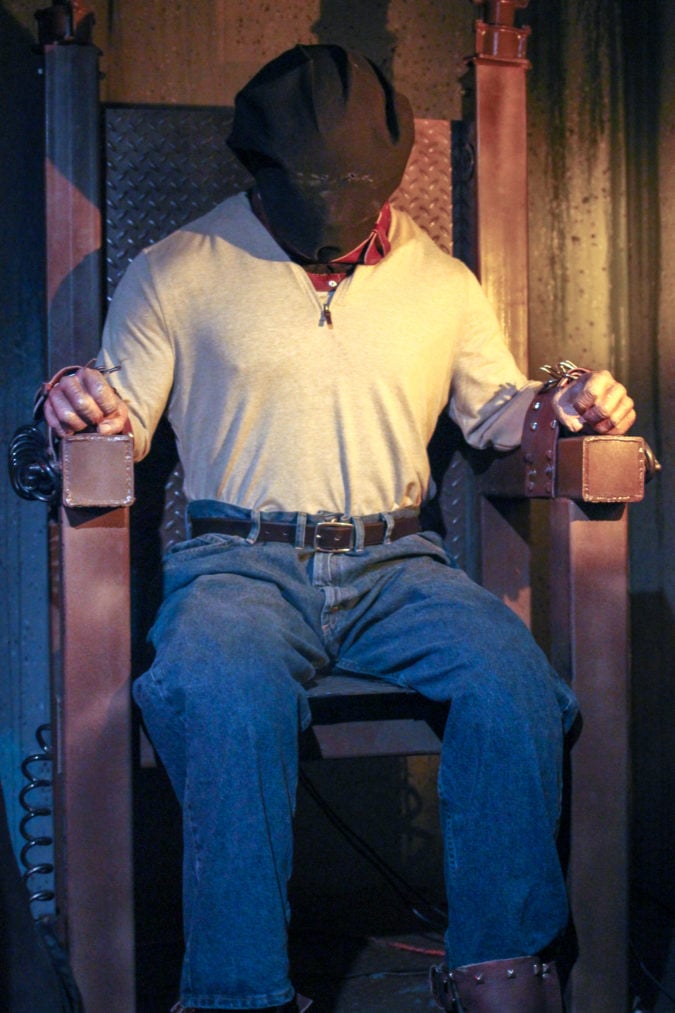

Truth may be stranger than fiction, but some of House of Frankenstein’s dioramas prove that real-life events may also be much scarier than their literary counterparts. Scenes of prisoners sentenced to die by electric chair or at the gallows—where the spectator becomes an executioner at the push of a button—are terrifying in a very visceral way. Zombies, vampires, and ghosts seem downright tame in comparison to the horrors dreamed up by—and for—humans.
Music and spoken words complement some scenes: The Haunted Mansion soundtrack plays on repeat at a seance and a scene from Poe’s The Pit and the Pendulum is accompanied by a dramatic reading of the terrifying tale. Standard-issue haunted house sounds—screams, creaking stairs, and evil laughs—further set the mood.
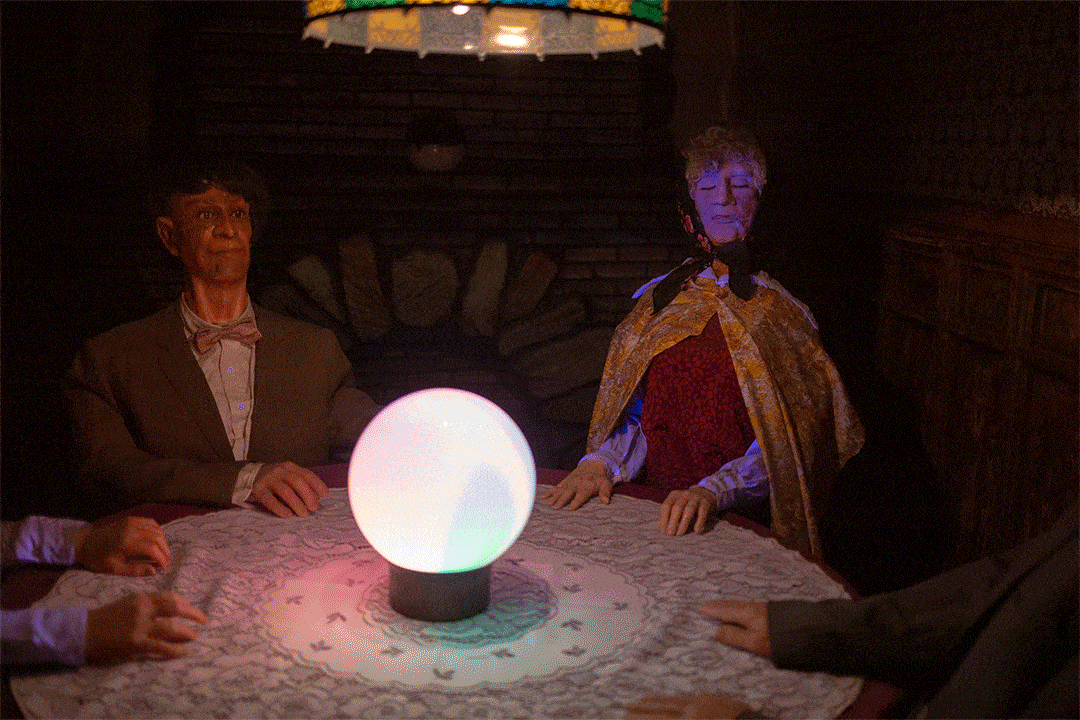
“It is very psychological,” says Marandola. “The music is spooky, the exhibits are disturbing—in a great way. You have no idea what is around the next turn, leaving you on edge.”
After my initial visit, I voluntarily return to the house of horrors two more times and the thrills are not diminished upon repeat viewings. I personally love spoilers, but even if the exhibits haven’t changed since the ‘70s, one visit to House of Frankenstein is just not sufficient.
Photo: Alexandra Charitan A “witch” is burned at the stake. | Photo: Alexandra Charitan Jack the Ripper. | Photo: Alexandra Charitan The Hunchback of Notre Dame. | Photo: Alexandra Charitan Photo: Alexandra Charitan
The same forceful puff of air to the ankles startles me three times in less than a minute. The biggest scare comes when I lean in to get a closer look at a completely dark window, thinking the light must be broken (further proof that I’m an easy mark). I trip a motion sensor that violently flings a “body,” hands bound with rope, at the plexiglass. The resulting thud is mirrored by the thump of my own heart and only slightly less loud than my involuntary scream.
“I do not typically scare easily,” says Marandola. “I do not fall for jump scares. And I love anything horror or scary. However, this place managed to scare the heck out of me. I screamed. My boyfriend screamed and his scream scared me all over again.”
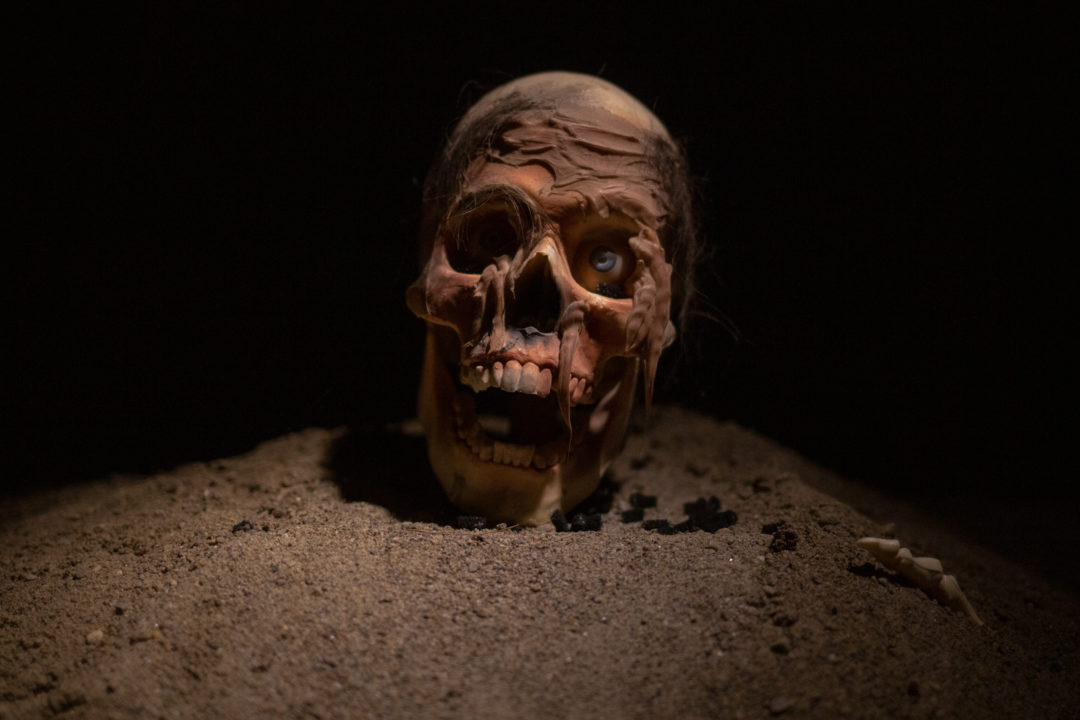
A few haunted house-like walk-through attractions interspersed between the dioramas help keep visitors on edge. Instead of a gift shop, patrons exit through the Black Hole, a short bridge enveloped in a spinning ceiling of stars and House of Frankenstein makes sure that each person leaves filled with adrenaline—and maybe a bit of vertigo.
“It feels like you’re also spinning—we were blown away,” says Marandola. “It was a gravitational mystery.”
Foolish mortals
Wax museums aren’t typically high-thrill attractions. But before constant celebrity updates and instant access to the past via the internet, wax museums taught travelers about historical events and brought them face-to-wax-face with important people. Just as taxidermy and natural history museums once exposed audiences to an exotic world they never knew existed, wax museums—with their lifelike figures and intricate dioramas—vividly display the past to those of us in the present.
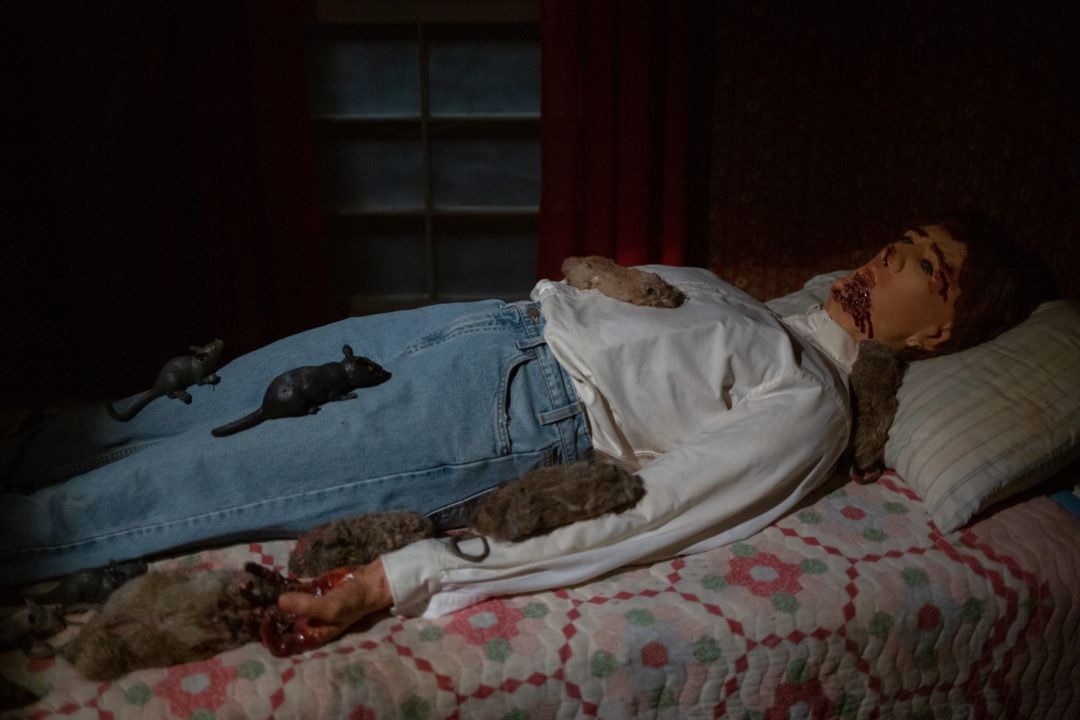
Today’s tourists—who have grown used to digital effects and high-tech animatronics—don’t always appreciate attractions filled with dimly-lit, dusty dioramas. As decades-old, low-tech wax museums across the country close, their figures are sold at auctions, absorbed into other museums, or scattered into private collections (John Oliver, John Stewart, and Stephen Colbert all scooped up several figures when Gettysburg’s Hall of Presidents and First Ladies closed in 2017).
Holdouts like House of Frankenstein (or the John Brown Wax Museum or the Niagara Wax Museum of History) should be valued not only because they’ve somehow managed to survive, but also for their artistry. They are dual time capsules—living postcards that provide visitors with a glimpse into historical events as well as into the time in which they were created.
The Bathtub Murder. | Photo: Alexandra Charitan Photo: Alexandra Charitan The Phantom of the Opera. | Photo: Alexandra Charitan A man who has been cheating on his wife with the babysitter discovers a macabre dinner surprise. | Photo: Alexandra Charitan Photo: Alexandra Charitan
“The art involved in everything is beautiful and something to really appreciate. And if you’re looking for a fun scary attraction—scary stuff is fun year round—this place is perfect,” Marandola says.
After a few heart-stopping jump scares and more than a few audible screams, I finish my first journey of terror (and my second, and third). I exit House of Frankenstein onto Canada Street and as my eyes adjust to the bright sunlight, I think that the warning signs may be good marketing, but they’re also true—I am nothing but a foolish mortal.
If you go
House of Frankenstein is open seasonally, April through October. Check their website for hours.
